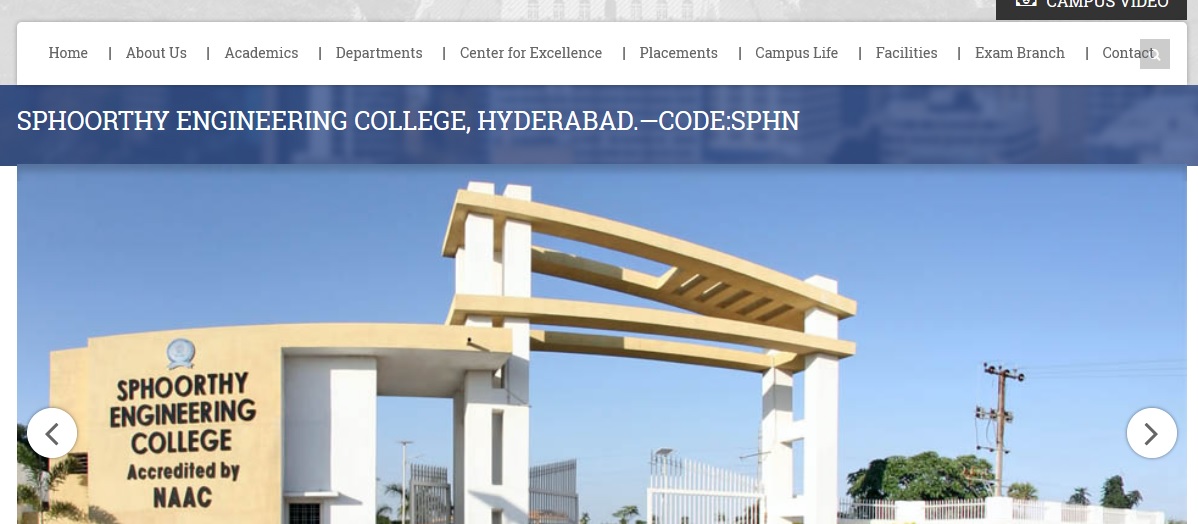RR310302 Hydraulic Machinery & Systems B.Tech Question Paper : sphoorthyengg.com
Name of the College : Sphoorthy Engineering College
University : JNTUH
Department : MECHANICAL ENGINEERING
Subject Name : HYDRAULIC MACHINERY AND SYSTEMS
Degree : B.Tech
Year/Sem : III/I
Website : sphoorthyengg.com
Document Type : Model Question Paper
Download Model/Sample Question Paper : https://www.pdfquestion.in/uploads/sphoorthyengg.com/4749-RR310302%20-%20HYDRAULIC%20MACHINERY%20AND%20SYSTEMS.pdf
Sphoorthy Hydraulic Machinery & Systems Question Paper
B. Tech III Year I Semester Examinations, December-2011
(MECHANICAL ENGINEERING)
Time: 3 hours
Max. Marks: 80
Related : Sphoorthy Iron Production B.Tech Question Paper : www.pdfquestion.in/4812.html
Model Questions
Answer any five questions :
All questions carry equal marks :
Set – I
1.a) A jet has a direct impact on a plate moving in the direction of the jet. Find the force of impact and the work done by the jet per second on the plate. Can this case occur in practical cases?
b) A jet of water delivers 0.056 cumec with a velocity of a 24 metres /sec and impinges tangentially on a vane moving in the direction of the jet with a velocity of 12 metres per second. The vane is so shaped that if stationary it would deflect the jet through an angle of 45o . Through what angle will the jet be actually deflected? What driving force will be exerted on the vane in the direction of motion? [8+8]

2.a) Differentiate between radial flow and parallel flow turbines. Give examples.
b) Show that the hydraulic efficiency for an inward flow reaction turbine discharging radially at outlet is given by
c) The external diameter of an inward flow reaction turbine is 45 cms. The width of the wheel at inlet is 12 cms, and the velocity of flow at inlet is 1.2 metre per second. Find the rate of flow passing through the turbine. [4+6+6]
3.a) A turbine is to operate under a head of 30 metres at 250 rpm. The discharge is 10.5 cumec. If the efficiency is 85%, determine
a) Power generated,
b) The specific speed of the turbine,
c) Type of turbine,
d) Performance under a head of 25 metres.
b) Explain unit speed, unit quantity, unit power of a turbine. [10+6]
4.a) What do you mean by negative slip? Under what circumstances can this occur? Explain the circumstances under which separation can occur in a reciprocating pump.
b) The bore and stoke of a single acting reciprocating pump are 12 cms and 24 cms respectively and the plunger has simple harmonic. The suction pipe is 8 cms in diameter and 4 metres long and the centre of the pump is 3 metres above the water level in the sump. Find the maximum speed at which the pump can run. Assume separation to occur at an absolute pressure head of 2.5 metres of water. Take atmospheric pressure head = 10.3 metres of water. [7+9]
5.a) What do you mean by the manometric head? How is it different from the head generated by the impeller?
b) The following are the result of tests conducted on a centrifugal pump.
Negative pressure head in suction pipe close to pump = 22 cms of mercury
Pressure head in delivery pipe close to pump = 1.50 kg/cm2 Difference of level between the two gauges = 0.50 metres
SHP of the electric motor = 32 hp
Discharge of the pump = 0.10 cumec
Diameter of the suction pipe = 20 cms
Diameter of the delivery pipe = 18 cmc
Calculate the overall efficiency of the pump. [6+10]
6. A centrifugal pump impeller has an external diameter of 50 cms and a discharge area of 0.15 metre2. The vanes are bent backwards so that the direction of the relative velocity at the outlet makes an angle of 150o with the tangent to the outer periphery drawn in the direction of the impeller rotation. The diameter of the suction and delivery pipes is 30 cms and 25 cms respectively. Pressure gauges at point on the suction and delivery pipes close to the pump and at a height of 1.75 metres above the level in the supply sump showed gauge pressure heads of 3.60 metres below and 20 metres above the atmospheric pressure head respectively, when the pump was delivering 225 litres per second of water at 820 rpm. It requires 100 hp to drive the pump. Find
i) The loss of head in the suction pipe.
ii) The manometric efficiency and
iii) The overall efficiency. [16]
7.a) Explain with a neat sketch the working of a hydraulic differential accumulator.
b) A hydraulic accumulator is 45 cms in diameter and the total moving load is 60 tonners. The frictional resistance against the movement of the ram is 5 tonners. Calculate the pressure of water when
i) The loaded ram is moving up with uniform velocity,
ii) When the loaded ram is moving down uniform velocity. [16]
8. Explain the following:
a) Gear & vane pumps
b) Air lift pump
c) Hydraulic lift. [4+6+6]
A jet of water delivers 0.056 comes with a velocity of a 24 meters /sec and impinges tangentially on a vane moving in the direction of the jet with a velocity of 12 meters per second. The vane is so shaped that if stationary it would deflect the jet through an angle of 450. Through what angle will the jet be actually deflected? What driving force will be exerted on the vane in the direction of motion?